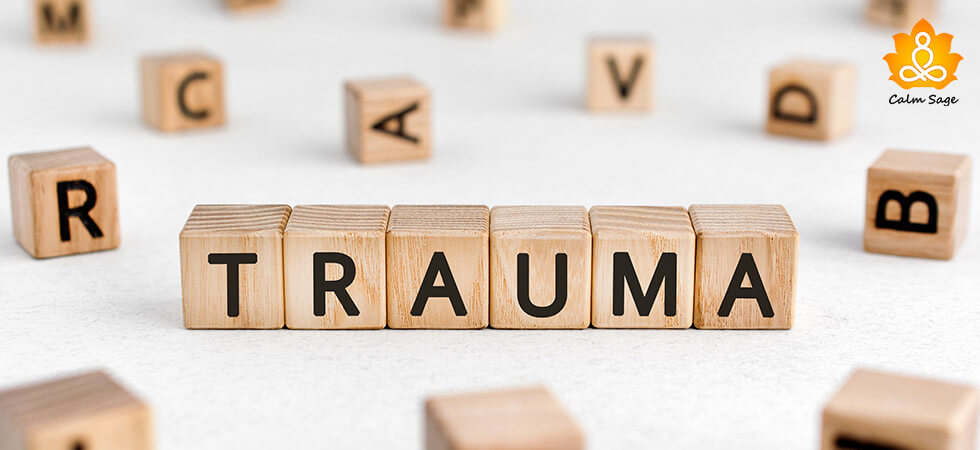Published In
Mental Disorders

Identifying Trauma Triggers And How To Deal With Them (With Examples)
When you experience emotional discomfort, it’s easy to name the experience as “being triggered” but not many people understand the implications of being triggered, not like people who’ve lived through a traumatic event. For people living with trauma, trauma triggers can be debilitating, frustrating, and sometimes even downright terrifying.
Trauma triggers are sudden and can remind you of an experience that you would not rather experience again. These traumatic triggers can include smells, sounds, colors, and even things as insignificant as clothes. These traumatic triggers are unique to each individual and can depend highly on the circumstances of the trauma.
With the right support and treatment, coping with trauma triggers can be possible. In this blog, let’s understand why identifying trauma triggers is important and how to deal with them.
What Are Traumatic Triggers?


Triggers when defined can be described as “an event that is the cause of a particular action, process, or situation.” A trigger, in our case, can be anything that causes you to remember a memory or event that has been a part of the trauma or has caused significant emotional and mental distress.
When you are faced with a trauma trigger, it can cause the feelings or thoughts you associate with the traumatic event to surface without warning. When you can’t prevent the unwanted feelings or thoughts, the response can make you feel overwhelmed and cause a reaction such as a panic attack.
Traumatic triggers can make you feel unsafe, confused, and panicked. You may even experience the same emotions, thoughts, and feelings, you experienced during the traumatic event, making you unpleasantly relive it.
To our minds, the triggers are a threat and in response, it causes you to act in fear, panic, and agitation. Most of the time, the response you have from triggers can be a defense mechanism to protect your mind from taking you back and reliving the traumatic event.
How you respond to a trigger depends on the circumstances of the trauma and the severity of the trauma.
The recovery from the trigger can take some time as your nervous system, once activated, needs time to relax and return to its normal state. Because of the reaction to trauma, the emotional tolerance goes to zero, and to feel balanced again, some time is required.
More often than not, triggers are associated with post-traumatic stress disorder (PTSD) and other trauma-related disorders.
Examples Of Trauma Triggers
The reaction to trauma is unique to each individual, even if you share the traumatic experience with someone else. There’s a little chance that what you perceive as a trigger will not be the same as the one you share the experience with.
Some common (and possible ) trauma trigger examples can include:
1. Sounds
Certain sounds can trigger a memory or response that can make you feel confused, unsafe, and troubled. Some of the common sound triggers can be:
- Ambulance or police sirens
- Loud music
- Fireworks
- Gunshots
- Yelling
- Crying, etc.
2.Visuals/Sights
If you see a certain visual, an object, or a person then it can also be a traumatic trigger. Common sight or visual triggers can include:
- Seeing the same brand of the car you were in during a fatal car accident
- A drunk person
- An object that was there during the traumatic event
- A building you associate with the traumatic event
- Clothes, etc.
3. Smells
Our senses never stop sending signals to the brain even if we are not consciously aware of them. Smells, sounds, and sight can be easily linked with memory so even a smell can be a traumatic trigger for some people. Some common examples of smell triggers can include:
- A perfume or cologne
- Alcohol (even rubbing alcohol)
- Gasoline
- Certain beverages or food items (meat, fish, etc.)
4. Events
One of the most common trauma trigger examples is events. You may find yourself attending an event or being present in a situation that may trigger the trauma. Some common triggers can be:
- Public speaking
- Speaking to the police, doctor, or anyone in authority
- Driving a vehicle
- Interacting with someone abusive
- Being rejected
- Unwelcome physical touch, etc.
5. Emotions
Did you know that even emotions can be triggers of trauma? Well, certain emotions (especially raw and strong ones) can make you feel overwhelmed and helpless. Emotions are often associated with childhood trauma and can include:
- Feeling invisible
- Being bullied
- Experiencing abandonment
- Feeling sad
- Crying, etc.
How To Identify Trauma Triggers?
Sometimes trauma triggers can be noticeable but other times, they can be too subtle and harder to predict. However, identifying a trigger is important as knowing what triggered you can help you find the right help.
Trauma triggers are often unpredictable but once you know how to identify them, they can help you find the source of the feelings that cause you emotional distress.
Here are some ways you can learn to identify trauma triggers:
Write your experiences in a journal. Pen your thoughts down about what you felt or experienced when you were triggered. You can write about what you heard, what you saw, what you smelt, or what you were feeling when the reaction happened.
Once you can connect the trauma reaction to the triggers, you’ll be easily able to identify the trauma triggers.
If you feel that you need professional intervention and help to understand your trauma symptoms, you can connect with a trauma-informed therapist and learn how to identify trauma triggers. A therapist can also help you figure out the source of your trauma reaction and how to effectively manage it.
How To Deal With Trauma Triggers?
Recovering from trauma can be challenging and may take some time but it’s not impossible. While it may not feel easy to avoid the triggers to avoid reliving the trauma, it’s not the best (or long-term) solution. It is important to identify trauma triggers and how to deal with them in the best way possible.
Even if you don’t know your traumatic triggers, you can always seek help from a professional or follow these steps to cope and understand your triggers:
- Focus on the present moment. Let your conscious awareness take over.
- Remind yourself that what you’re experiencing is a normal reaction to trauma and that it’s OK to feel this way.
- Try to incorporate breathing exercisesto combat the trigger response.
Living through a traumatic experience can be overwhelming and can leave severe emotional and mental wounds. However, with the right trauma-informed therapy approach you can learn to cope with trauma. The right therapy treatments can help ease the symptoms and impact of the trauma triggers.
Recovering from trauma might not be easy but it is possible. You can learn more about trauma and its effects on your health by visiting our website. If you’re looking for professional support, you can connect with a therapist by clicking on the link below.
Talkspace
Best at providing couples therapy and teen therapy
- certified and experienced counselors
- Affordable and various monthly subscription
- Also provides medication management services
- Users can pick the therapist of their match
I hope this blog helped you understand how to identify trauma triggers and how to deal with them. For more, you can write to us at info@calmsage.com or DM us on social media.
You can also share your thoughts and views in the comments below!
Take Care.
